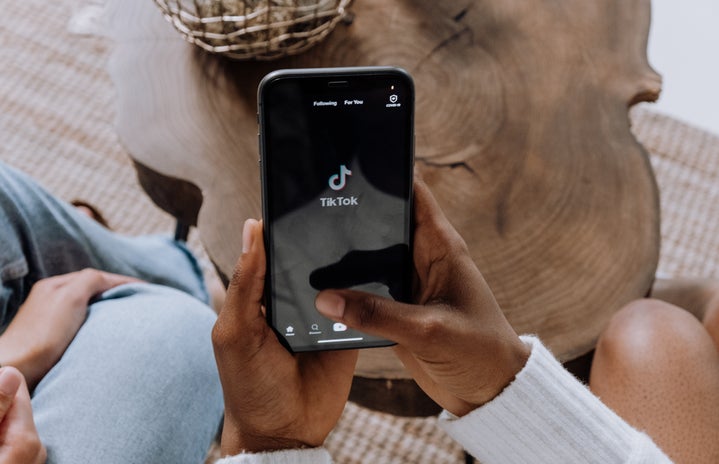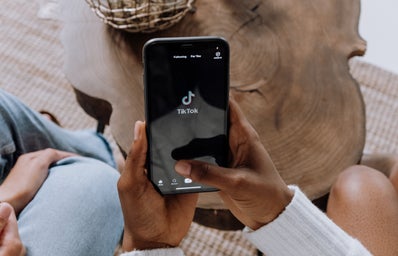The infamous doom scroll— hours and hours of mindless content slipping by at the swipe of your fingertips. We’ve all been there. There’s something comforting about zoning out with TikToks or Instagram reels, and in many ways, social media can be a great way to relax and unwind. But while it’s fun and often rewarding, it’s also a slippery slope. What starts as a quick break can turn into hours of distraction that leave us drained rather than refreshed and–perhaps worst of all–keep us from experiencing the natural, more meaningful forms of dopamine life has to offer.
Learning to manage social media in a healthy way is crucial for everyone—it should enhance your life, not distract you from it. Unfortunately, our hard-wired habits are incredibly difficult to change. If only we could suddenly stop spending time on our phones and instantly fill those hours with going to the gym, writing novels, or learning new languages. But the reality is not that simple. It’s a challenge not to doom scroll when social media is constantly in your pocket, tempting you 24/7. The thought of stopping that reliance can feel overwhelming, and knowing where to start is even harder. So, I’m going to share some strategies I’ve developed to help practice self-control, with the hope of reclaiming a more intentional approach to scrolling.
Create a List of Alternatives to Scrolling
My first suggestion is to have a list in your notes app or mentally, of things you can do instead of doom scrolling. This enables you to actively choose something else when you catch yourself mindlessly scrolling. In my experience, it’s difficult to stop when you don’t have a replacement activity. There are obvious “productive” or “healthy” suggestions like going for a walk, and if that kind of thing works for you, great! But for me, the alternative activity can’t require too much effort, and it has to be somewhat exciting. So, think of things that feel fun and easy. Maybe calling a friend or family member from the comfort of your bed, journaling, reading something light and entertaining, doing a quick craft, listening to a podcast, or planning a future trip. You also don’t have to avoid your phone altogether. Instead, try shifting to something more productive: respond to emails, check off tasks from your to-do list, or read articles that add value to your life. You’re still using your phone, but in a way that feels purposeful rather than mindless. It’s okay if you don’t redirect every time, but making the occasional effort to choose something else is a powerful step toward breaking the habit.
Set App Time Limits
You can set app time limits on your phone, and while it’s easy to ignore them (I’m guilty of punching in my password and bypassing the limit), the key is to set realistic goals. If you’re currently spending four hours a day on TikTok, don’t try to cut it down to 20 minutes overnight. Be patient and gradually wean yourself off. A helpful trick? Set up parental controls with a trusted friend so they have the passcode to unlock the app. That way, you’ll need to message them when you hit your limit, adding an extra step while holding you accountable.
Change Your Phone Display to Black and White
Switch your phone’s display from color to grayscale in Settings. It’s simple, but without the vibrant colors, the content becomes less stimulating and less rewarding, making you less likely to get sucked into endless scrolling.
Create a Daily Schedule
Start each day by creating a schedule or a list of things you want to accomplish. If you don’t have a clear sense of what doom scrolling is actively preventing you from doing, it’s harder to find the motivation to stop. By identifying your tasks or goals for the day, you can catch yourself in the act of scrolling and think, “This is keeping me from getting x done.”
Try a Dopamine Detox
Train yourself to be okay without constant stimulation. A dopamine detox involves intentionally limiting high-dopamine activities (like social media) for a period of time so your brain can reset. It’s a way to recondition yourself to feel satisfied with slower, less stimulating activities.
Curate Your Feed
This tip won’t stop doom scrolling, but it can help take the “doom” out of it. If you follow accounts that share negative news or posts that increase your anxiety, it’s time to clean up your social media. Unfollow or mute accounts that drain your energy and replace them with ones that inspire or uplift you. Seek out pages that promote mental health, positivity, or hobbies you enjoy. Balance is key, so it’s okay to stay informed, but make sure you’re not overwhelmed by it.
Overall, the goal isn’t to quit social media completely or to view our phones as the enemy. It’s about taking back control of how we use our time and making conscious choices that align with the lives we want to live. By practicing mindfulness and setting some boundaries, we can reclaim our time and attention and put it toward things that truly enrich us. With a little effort, we can turn mindless scrolling into something more intentional and fulfilling.


